“When I die and they bury me, I want a tree to be planted, so that I can become a tree,”
said my sister-in-law across the table at lunch one day. And I felt my heart give a little gasp as I realized this beautiful idea is exactly what I want.
I have always had a certain kind of relationship with plants and animals and other life occurring around me. Or rather, I have always felt myself in relation to them and have desperately strived toward inter-species communication. I don’t know where it comes from. Perhaps it is in inborn, as I also see this sensitivity in my child, who anthropomorphizes just about anything, breathing life into objects or food he comes into contact with, each with a soul and a destiny, some with a preordained demise, as he narrates their grisly and preparatory end, sliced, diced, and going into a salad or some such.
When he was four years old, we sat at a bench in springtime and I pointed out a sad Hyacinth, bent over and broken. Julian wailed, “Oh Mom, don’t say that! You’re going to make me cry.” I loved his innate identification of flowers as beings. Charles Darwin was this way too, you know.
We are each sensitive in our own way. I am sensitive to life but it doesn’t mean I’m a naturally good at caretaking. This is why I bitterly wept a little after letting a small garden patch die, vowing never again to embark on the sacred undertaking of planting a garden, until i was sure I could see it through and actually cultivate thriving life. How dare I irresponsibly claim a right to hold in my hands whether or not something lives or dies. Who am I to decide this? It’s a burden too great and I can’t handle it, honestly. It’s like Gandalf said, and what I say to myself in his voice,
”Many that live deserve death. And some that die deserve life. Can you give it to them, Frodo?”
Mysticism & Mystery
I recently finished a book by naturalist Lyanda Lynn Haupt titled, Rooted: Life at the Crossroads of Science, Nature, and Spirit. Reading offers a unique kind of friend-finding and I love that there are people out there like me, interested and more knowledgeable on the intersection of science and spirituality. I have always felt they were interwoven and often find that looking at one through the lens of the other gives me a deeper, better, and reflexive scope of both.
She speaks of such interesting things, like the importance of wandering, stillness, the important work of darkness and solitude, all things I was born to know. We favor the same philosophers and have poets in common like Mary Oliver and Emily Dickinson. Soul sisters.
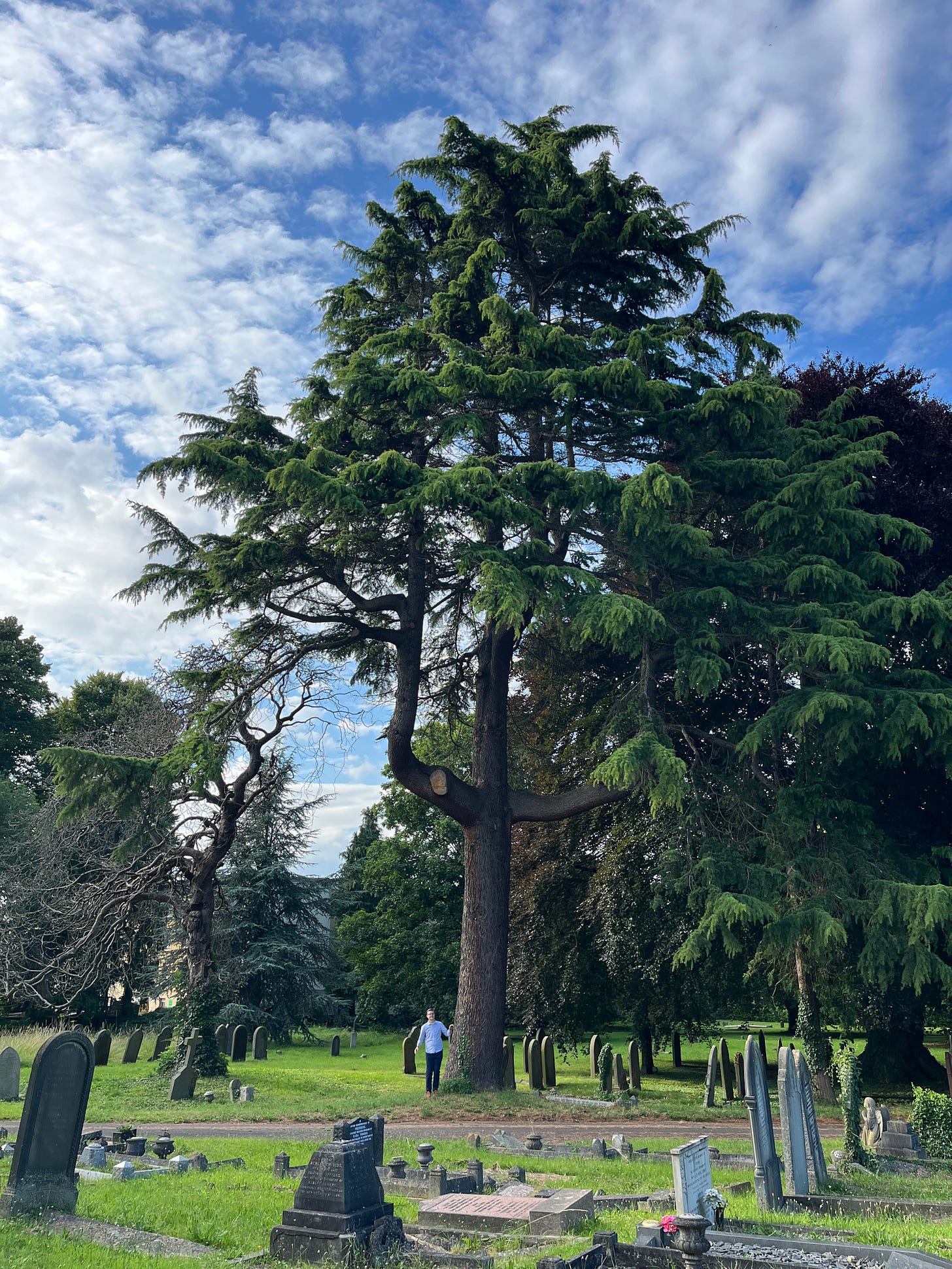
If I’m sensitive to the living then the same must be true about death. I think about death a lot. For good reason and no reason. I think it’s a component of my spiritual language. I think about death and life a lot at Easter, this one especially.
My friend died a few days ago. I saw her and spoke to her recently and now she’s gone and her family is in shambles and everyone in the neighborhood is affected.
A great sadness has moved in and nobody knows what to say to it. It is a jolt, felt in the system and the universe. The space this woman took up now loudly replaced by her absence seems palpable in ways beyond how we normally perceive, not entirely defined by the senses.
I saw a video recently of a blind woman named Molly Burke who can hear trees. She’s shown standing next to a tree. She tells of how she and her boyfriend were just walking in the park with no guide dog or cane or anything and she suddenly reached her hand out and touched that tree. How did she know it was there? She moved away from the tree many times, and reached out, finding it again like she could detect it perfectly.
She explains, “This tree was so loud, I thought I was going to run into it. Everything makes a sound. It’s either a sound or a lack of sound but even a lack of sound is a sound. And it feels like it’s coming toward me. Like a wall. It’s coming at me.”
And maybe it’s either a presence or a lack of presence, but even a lack of presence just creates a new kind of presence, taking up space and coming toward you, strong and real enough that you might put out your hands. It’s not for me to say or know, but maybe it’s not that my friend who was there is simply no longer there. It’s that her not-being-there is now there, bringing with it pain to match the love of a present person.
This strange cohabitation and interconnection of humans in nature as described in Haupt’s book is certainly right up my mystified alley. The less a thing can be readily explained, the more interesting and explorable it is. It appears we are only capable of touching on the truth of things and that is what compels me to seek truth out at all. I am very wary of rushing to have answers. For me, mystery is essential.
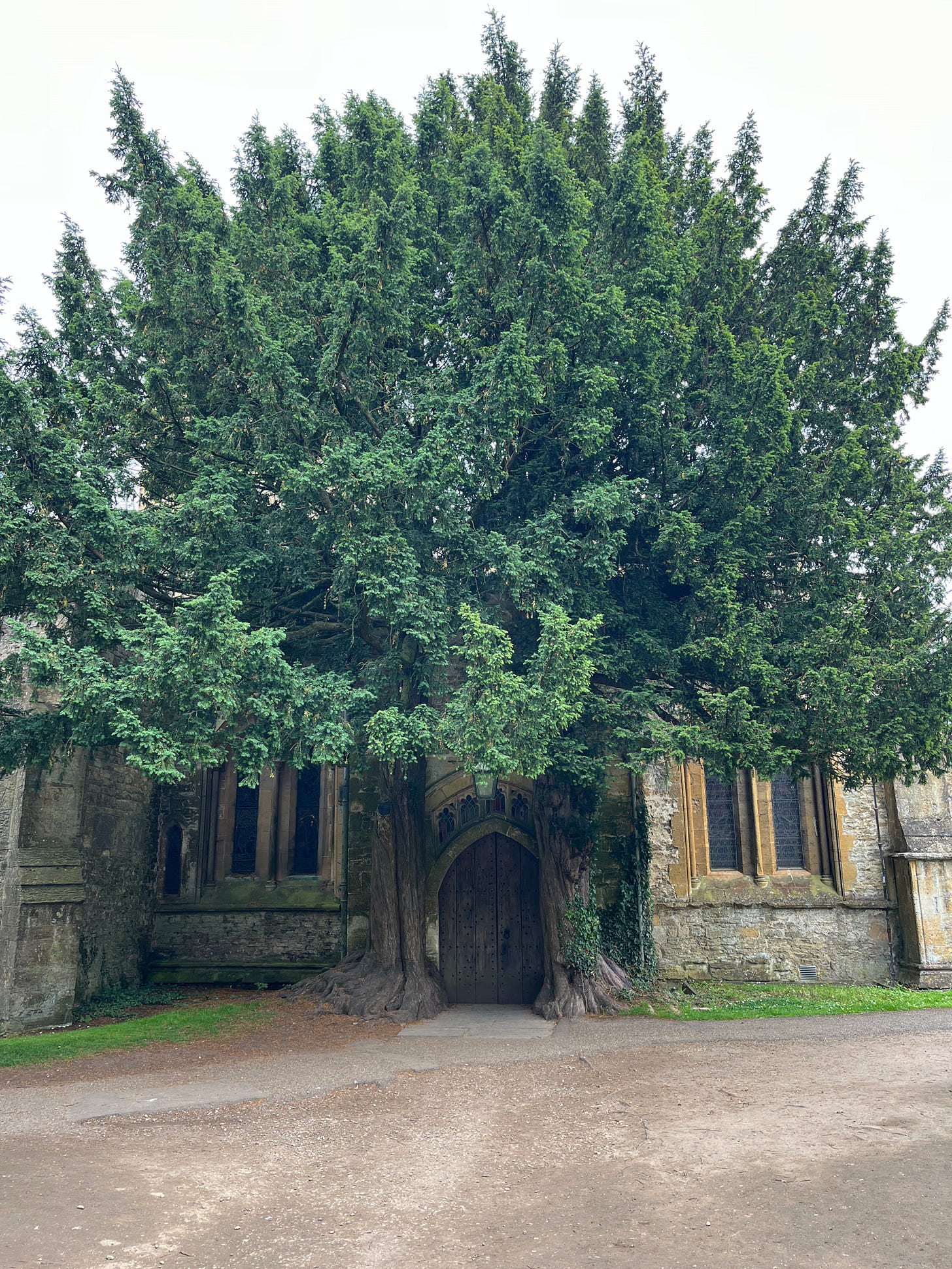
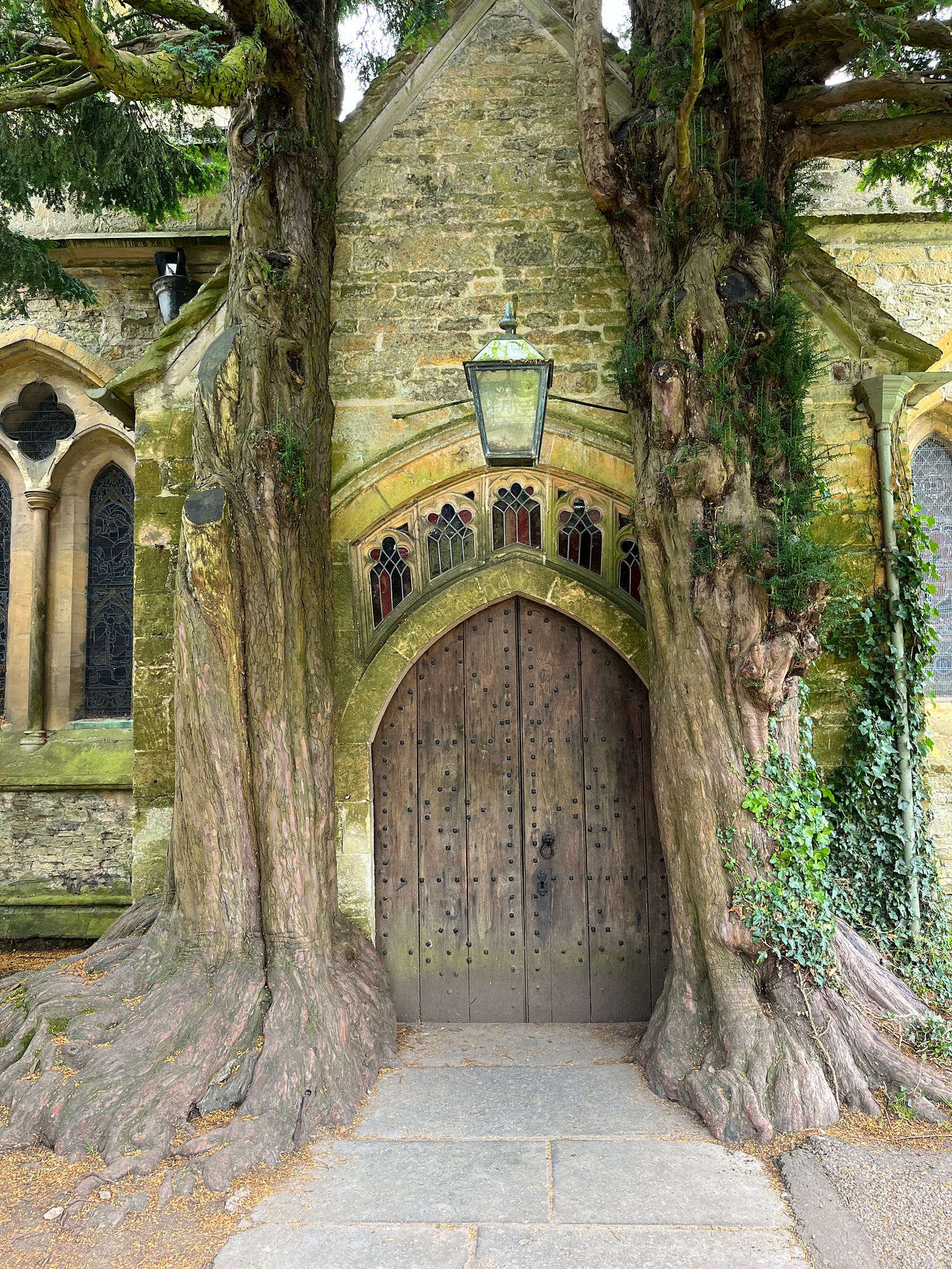
Hope
If I am sensitive to life and death, then the same must be true about the doom of both, including the complexity and bafflement of hope.
I’ve always struggled with the dark side of hope. It feels like setting yourself up for suffering. What actual use is it when there’s no certainty of an outcome? When all that is lost shall remain so? Maybe I struggle with hope because it not only feels too vulnerable, but so passive and helpless. Let’s just sit here and hope I guess, or whatever. But maybe it’s really not. Haupt guides me to a new explanation to consider, one that feels expansive and more clarifying.
First she discovered a new definition of hope in a Benedictine monastery library: “That virtue by which we take responsibility for the future,"
To which she adds,
”and a quality that gives our actions special urgency.”
If hope compels one to take responsibility now, to act, to move, to focus forward, this sounds more productive, a purpose and goal in and of itself.
Virtue is another term that seems elusive. If you’ve ever thought about this one, read on:
I looked up “virtue” in the same old monastic lexicon and found virtue described as the power to realize good, to do so “joyfully and with perseverance in spite of obstacles.” Hope asked something of us. The singular virtue of acting in hope that has nothing to do with the likelihood of a specific outcome; it has simply to do, in this moment, with participation in the renewal of the earth, however that will manifest.
Participation of renewal.
Haupt directs to Rebecca Solnit who said in her book Hope in the Dark,
“It's important to say what hope is not: it is not the belief that everything was, is, or will be fine.”
Suddenly I feel my lungs expanding.
To that, Haupt says,
Hope is not a remedy or even a substitute for the despair and anxiety we face in the modern world, but a companion to these things. Mature hope involves a willingness to allow that brokenness and beauty sometimes intertwine. “We live in an extraordinary time full of vital, transformative movements that could not be foreseen,” argues Solnit. “It's also a nightmarish time. Full engagement requires the ability to perceive both."
Maybe it is that hope’s purpose is not for the outcome, but for the holder in enduring life. For holy recognition of the balance of needful things and the eternal nature. Sorrow and joy, ends and beginnings, darkness and light, presence and vacancy.
Healing Tree
I am so enamoured by the wisdom of trees but the admiration seems to reach new levels the more I learn. How they are connected, how they communicate, and even take care of one another, even if they’re not of the same species. Look here:
The thinner tree was cut years ago and the larger tree held onto the life remaining, supporting it and feeding it.
This is a process called inosculation where trees commonly of the same species but not exclusively, fuse together, self-grafting, and share nutrients, water, and biorhythms. This allows them to merge and grow together, forming a single, interconnected organism. Life sustaining life.
To make it extra beautiful, the term emanates from latin - ōsculārī, to kiss.1
And I don’t know why but things like this make me burst into immediate tears. If my teachers the trees can graft other trees into their physical being and succor into wholeness the fractured life that remains upon death, as co-inhabitants sharing the natural, physical, and maybe metaphysical world, could we not do the same? With those of our own species or tribe, but not exclusively?
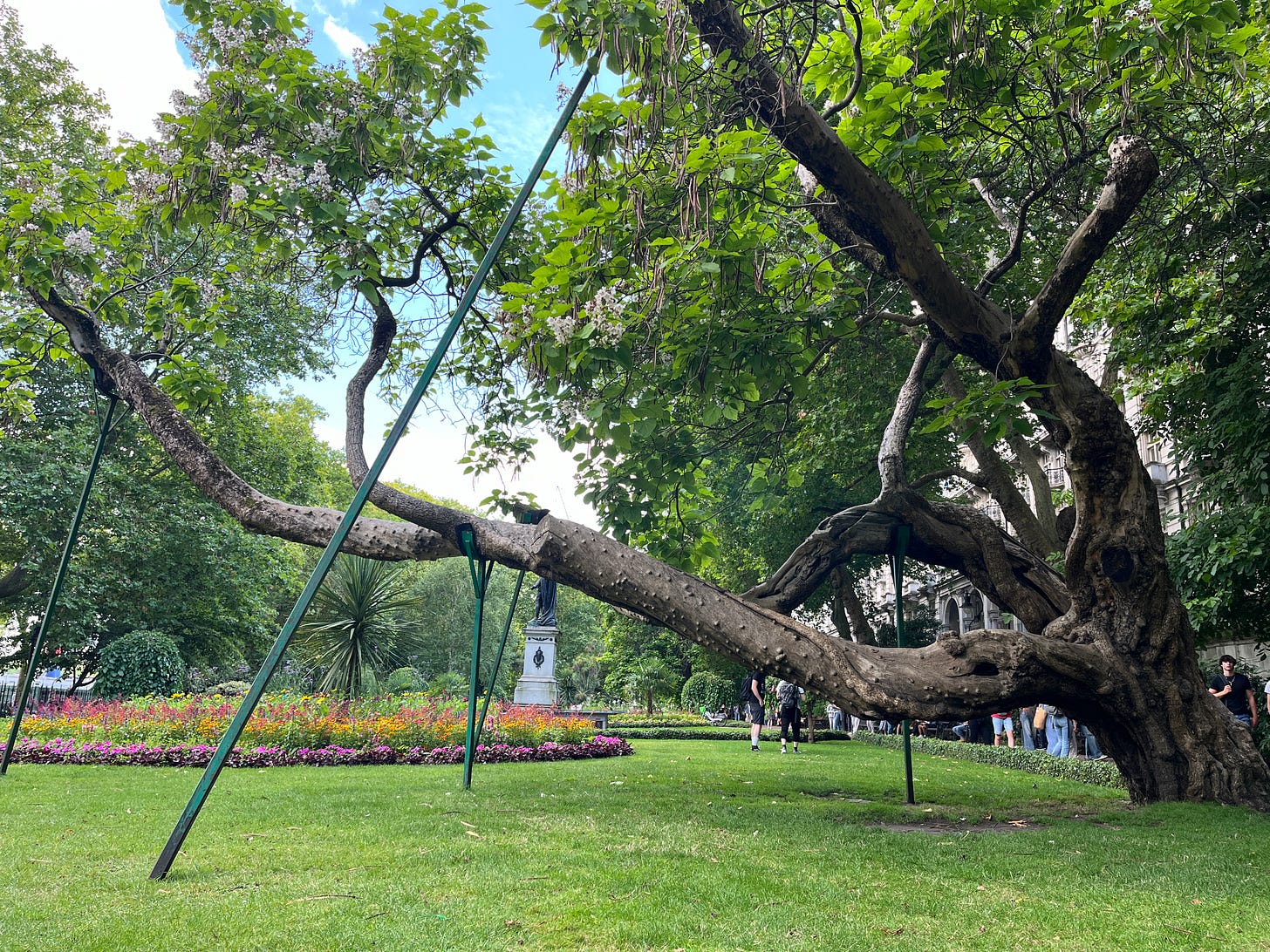
Haupt concludes her book speaking of death as a sacred step in crucial caretaking of life. She tells of a marine biologist named Rachel Carson who was dying of cancer. Carson was not sure what awaited her as far as an afterlife, but was certain in what she called material immortality, a term I love and will now adopt. She’d written a piece called “Undersea,” published by the Atlantic Monthly in 1937 and said this:
Individual elements are lost to view, only to reappear again and again in different incarnations in a kind of material immortality….Against this cosmic background the life span of a particular plant or animal appears not as a drama complete in itself, but only as a brief interlude in a panorama of endless change.
Haupt closes out the story saying this:
She acknowledged that this is a “biologist’s philosophy,” and her observations are both spiritually beautiful and scientifically astute. It is a law of physics that all matter is conserved–our bodies return, return, return. This is the message of ecologists, and of mystics–that each life is radically connected to all of life, always, with nothing so small that it can be lost.
With nothing so small that it can be lost.
With the feelings of insignificance—almost nothingness that loss can bring, this feels like treasure. Never actually lost. It reminds of an exhibit in the American Museum of Natural History explaining how we are all made of stars. On the website it states,
“Every atom of oxygen in our lungs, of carbon in our muscles, of calcium in our bones, of iron in our blood - was created inside a star before Earth was born.”
There is no waste in Grand Designs and the idea that there is one great formation, with continual circulating reintegration, re-absorption of all the parts of life into other life feels important and lasting, the way truly important things are. It’s an idea without end.
Sitting in the knowledge of the fluidity of things here and not here, I imagine my own place and offering in the continuum of perpetuating life, which now incorporates the thrilling prospect of not only finding a spiritual immortality but a material one with fellow beings—human and otherwise—on an earth I love.
These are just a few of my Eastertide thoughts on life and death, and death and life, as we enter the rebirth season in this hallowed round, where the dead give way to the living and in so doing, create an interconnected mutual immortality.
Yes. I should be honored to be a tree.

From Roar Wildlife News
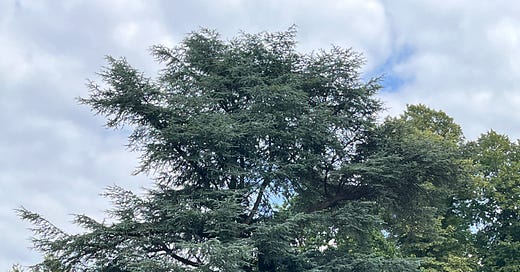





These lines (and several others) struck me...
"The space this woman took up now loudly replaced by her absence seems palpable in ways beyond how we normally perceive, not entirely defined by the senses." I have felt this with the loss of my grandma recently. Her absence is palpable, but I can't put words to it.
"Hope is the participation of renewal." Love this! I am on a journey to understand hope. I don't know if I will ever confidently arrive. But the journey will bring me enlightenment...I hope! :)
And trees are one of my favorite things in the whole world. I loved every pic you shared here and feel like I connect to them just knowing they are out there. So thank you.